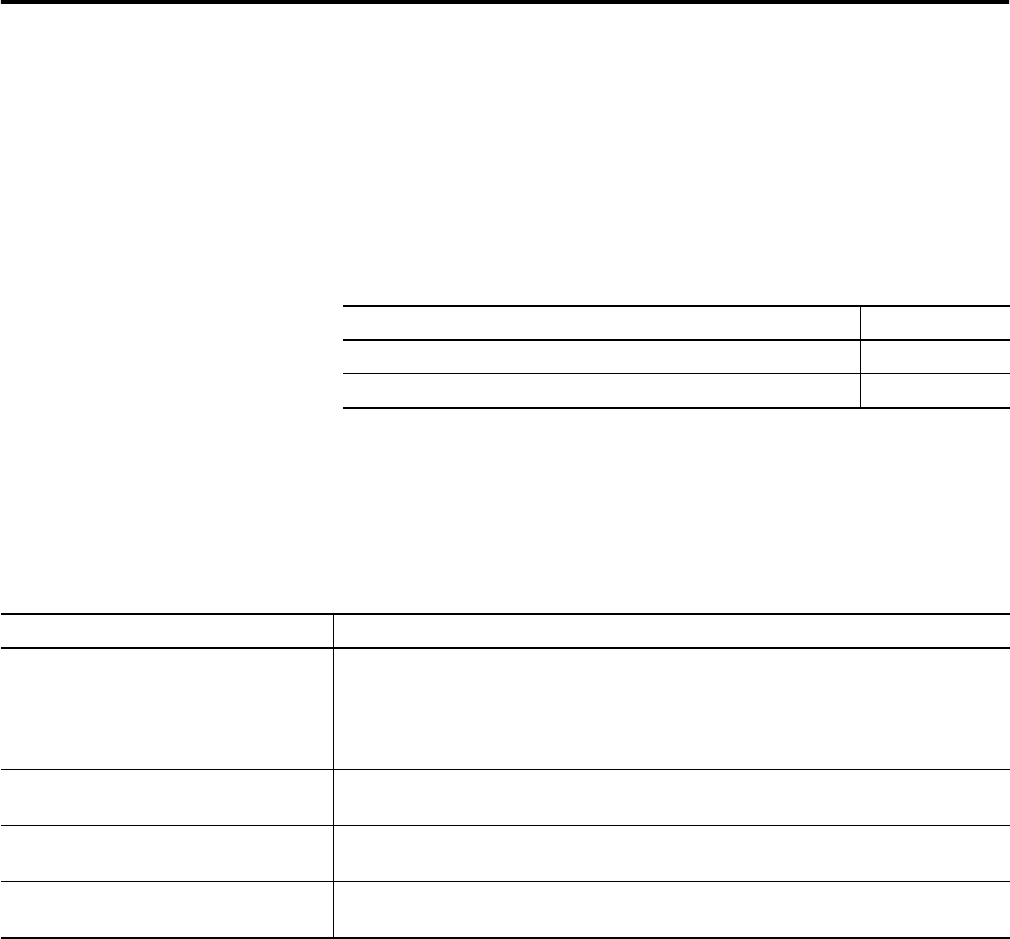supporting Sequence of Events
Table Of Contents
- 1732E-UM002A-EN-E 1732E EtherNet/IP ArmorBlock Supporting Sequence of Events User Manual
- Important User Information
- Table of Contents
- Preface
- Chapter 1 - About 1732E ArmorBlock Modules
- Chapter 2 - Module Overview
- Chapter 3 - Use the Module in an ArmorBlock System
- Chapter 4 - Install Your Module
- Chapter 5 - Configure the Module for Your EtherNet/IP Network
- Chapter 6 - Configure the Module Using RSLogix 5000
- Introduction
- Set Up the Hardware
- Create the Example Application
- Configure Your I/O Module
- Overview of the Configuration Process
- Add a New Bridge and Module to Your RSLogix 5000 Project
- Use the Default Configuration
- Change the Default Configuration
- Download Your Configuration
- Edit Your Configuration
- Access Module Data in RSLogix 5000
- Configure RSLogix 5000 and the 1756-EN2T Communication Module for CIP Sync
- Chapter Summary and What’s Next
- Chapter 7 - Module Features
- Introduction
- Determine Module Compatibility
- Module Features That Can Be Configured
- Chapter Summary and What’s Next
- Chapter 8 - Using the Module
- Chapter 9 - Interpret Status Indicators
- Chapter 10 - Troubleshoot the Module
- Appendix A - ArmorBlock 2 Port Ethernet Module Specifications
- Appendix B - Module Tags
- Appendix C - 1732E EtherNet/IP ArmorBlock Supporting Sequence of Events Data Tables
- Appendix D - Connect to Networks via Ethernet Interface
- Appendix E - 1732E ArmorBlock I/O Embedded Web Server
- Glossary
- Index
- How Are We Doing?
- Back Cover

11 Publication 1732E-UM002A-EN-P - March 2010
3
Use the Module in an ArmorBlock System
Introduction
This chapter describes how the 1732E EtherNet/IP ArmorBlock Supporting
Sequence of Events module operates in an ArmorBlock system.
Differences Between
Module and Standard I/O
In many aspects, the module behaves the same as other ArmorBlock digital
input modules. However, the module offers several significant differences
from other EtherNet/IP ArmorBlock digital input modules, including those
described in the following table.
Similar Functionality to
Standard ArmorBlock
With respect to general module operation in an ArmorBlock I/O system, the
module operates similarly to other ArmorBlock, single and dual port
EtherNet/IP I/O modules in many ways. This chapter focuses on how the
module’s behavior differs from that of other ArmorBlock I/O modules.
However, you should be aware of aspects in which the module is similar to
Topic Page
Differences Between Module and Standard I/O 11
Similar Functionality to Standard ArmorBlock 11
Difference Description
Additional data produced for controller The module produces significantly more data for its owner-controller than standard
ArmorBlock digital input modules. While other input modules only produce ON/OFF and
fault status, the module produces data such as ON/OFF and fault status, timestamp data,
indication of whether new data was produced for specific input points or if transitions were
not timestamped.
CIP Sync This module has an internal clock that is synchronized with a master clock using CIP Sync.
This clock is used for time stamping inputs.
Only one owner-controller per module While multiple controllers can simultaneously own other digital input modules, the module
only supports a single owner-controller.
No listen-only connections Controllers cannot make listen-only connections to the module. All connections between
the module and its owner-controller are direct connections.










